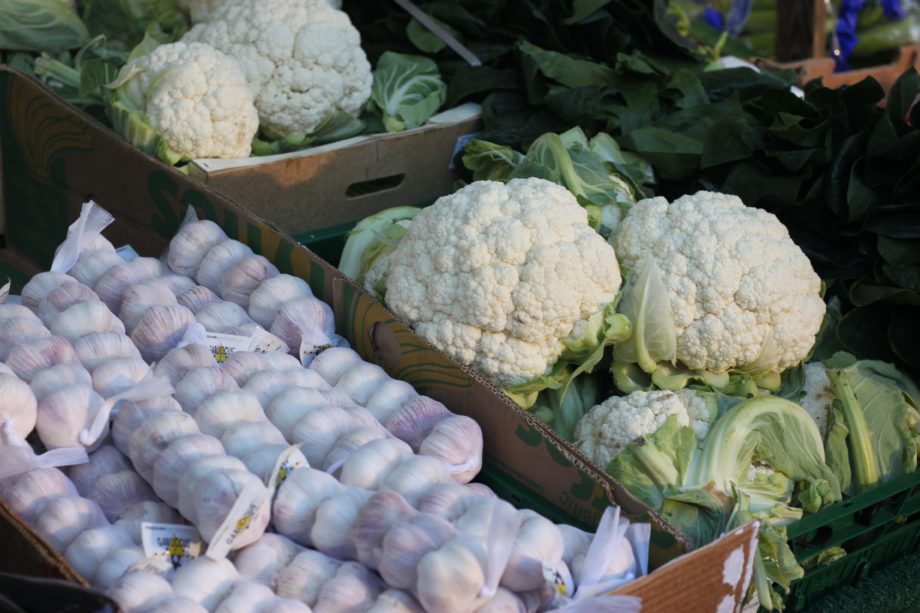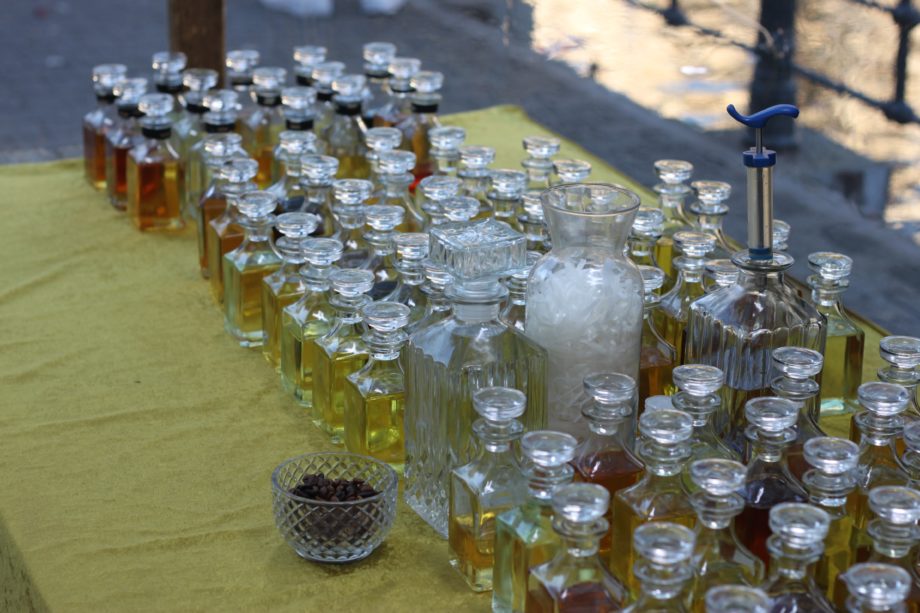Scented Entanglements
On olfactory racism and the ‘forgetting’ of odours and scents in the anthropological study of ‘race’
Shortly before the first Corona lockdown in spring 2020, I was busy preparing for fieldwork in Turkey on a much neglected topic in the scholarly literature on beauty, namely the role of odours and fragrances. Reading up on the history of smell cultures and perfumes (ultimately unable to leave for fieldwork), I began talking to Berlin-based relatives, neighbours, and friends about the topic. A friend’s mother who came to Germany among the first generation of Turkish so-called guest workers recalled how back in the early 1980s, her elderly German neighbour repeatedly told her that she “stank of garlic.” In spite of its transgressive intrusiveness, my friend’s mother remembered this statement as being brought forward in a seemingly friendly, matter-of-fact way. Almost four decades later, she continued to be puzzled and troubled by these comments, because she had never even liked or consumed garlic. Another friend, Sibel, the daughter of Turkish immigrants born in Berlin, told me about her immense anxiety to be perceived as smelly. Sibel was well aware of the common stereotype that Turkish women, especially those with headscarves, “smelled of sweat and kitchen,” as she put it. Therefore, ever since she started veiling as a young adult she has taken great care to mask her body odours, taking an extra set of clothes everywhere she goes, always careful not to pick up bad smells in her routine as a nursery schoolteacher. Finally, otherwise amiable neighbours confided to me about their strong aversion of the presumably ‘cheap’ colognes worn by ‘Turkish’ or ‘Arab’ men in the neighbourhood in highly affective terms. Thus, what surfaced from my rather naive questions about scent preferences and dislikes were stories of racially charged scent repulsion and anxiety.
Accordingly, I began to wonder about the olfactory underpinnings of racism. The rumour of racialized persons “smelling of garlic” opened up an entire imaginative space for me on sensory homemaking through cooking and commensurality, while it also clearly spoke of the sensual grounding of racist exclusion and devaluation. Sibel’s anxiety to pick up undesirable odours or else appear as “smelly” carried important insights about the sensual marking of racialized bodies within hegemonic, seemingly odourless smellscapes. It implied that for some, a great deal of odour elimination work was seen as necessary to counter the notion of being “smelly,” with their bodies always already marked as such, whereas for others, including myself, such worries were of little relevance for their embodied everyday lives.

Vegetables for display at a market in Berlin-Neukölln (photograph: C. Liebelt, Jan. 2023)
In late spring 2020 I discovered a newly published book that helped me make sense of my research findings and observations: Drawing on a large archive of colonial writings, scientific and literary works, The Smell of Slavery by Andrew Kettler (2020) delineates the history of olfactory racism in the Atlantic World. Kettler describes a process in which Western Europe in the Early Modern period transformed from a preoccupation with perfumes and smell –an “aromatic past,” according to Kettler – to a collective fantasy of inhabiting a deodorized modernity. In the process, Western Europeans emplaced odours upon the bodies of those they encountered, enslaved, and colonized ‘in an ostentatious game of sensory imperialism’ (ibid. 9), a form of ‘olfactory othering’ (ibid. 47). The rise of biological race theory, according to Kettler, was related to a sensual cosmology that conceptualized the odours of others as increasingly ‚embodied, uncanny, and persistent‘ (ibid.: 76). Long before the imperial era and the European post-war guest worker regime, poor odours were attributed to Jews. Kettler outlines how ‘anti-Semitic tropes helped to establish … racial state[s] of the West, whereby racism asserted greater force through sensory feelings of disgust,’ with the bodies thus singled out being ‘increasingly understood as unable to be cleansed’ (ibid.: 73).
Olfactory racism lives on and continues to inform immigrants’ and racialized persons’ experiences of discrimination and self-representation. Seconding my friend’s mother’s experiences, immigrant songs speak of everyday olfactory racism, for example as those who ‘stink of garlic’ in post-war Germany (Cem Karaca, ‘Willkommen’ [Welcome], 1984; see also ‘Songs of Gastarbeiter,’ Vol. 1, CD/Vinyl/MP3, Trikont 2013). Similar to Sibel’s anxiety of being (mis-)recognized as smelly, Martin Manalansan (2006) found that Asian Americans in New York City compromise their food preferences and invest in exorbitant house-cleaning efforts to evade the ‘smelly immigrant trope’. In 2017, one of the UK’s biggest buy-to-let landlords issued an instruction not to let his properties to ‘coloured people’ because the smell of their curry ‘sticks to the carpet’ (cf. Buettner 2008). Until today, one of the standard categories of scents in modern – that is, French – perfumery is called ‘oriental,’ in use for perfumes based on animal substances such as musk, castoreum, civet or ambergris – anal or sperm secretions now commonly replaced by synthetics for animal protection. According to one of modern perfumery’s basic references, oriental perfumes have ‘strongly erogenous fantasy complexes’ (Jellinek 1997 [1951]: 76) and they include perfumes called Shalimar, Obsession, or Opium (see Calkin and Jellinek 1994: 123-128). This categorization assembles a multitude of racialized assumptions in a rather disturbing textbook case of Orientalism.

Asian streetfood at a market in Berlin-Neukölln (photograph: C. Liebelt, Jan 2023)
Against this background, the ‘active forgetting’ of odours in relation to race theory (Kettler 2020: 9) is indeed striking. This includes anthropological theory, which has only just begun to conceptualise the senses, most importantly vision and sound, but rarely smell. In classical anthropology, according to Constance Classen (1992), the sense of smell, olfactory symbolism, and its relation to racism remained ‘overlooked and uninvestigated’ (ibid. 133) Classen relates anthropologists’ reluctance to recognise the importance of smell with its marginalization as a so-called ‘lower’ sense in the classical hierarchy of the senses, as well as with ‘the racist tendencies of an earlier anthropology to associate [it] with the “lower” races’ (1997: 404f.). In spite of the fact that many anthropologists today are proud of their discipline’s anti-racist traditions, much is left to be tackled and changed in the anthropological study of racialization (cf. Anderson 2019). For example, what kind of insights into the actual making of ‘race’ and the affective workings of racism may we gain by looking into the racialization of bodies as smelly and undesirable? What might be the role of sensual ethnographic research in the endeavour of analyzing and ultimately, undoing race and white supremacy? We may certainly gain by looking at the ways olfactory racism and ‘smelly immigrant’-tropes impact the formation of racialized subjectivities, olfactory anxieties, and fragrant practices; also, by analyzing the differing experiences and representations of first-, second- and third-generation immigrants with respect to olfactory anxieties and the management of (body) odours; by inquiring the role of aromatic practices for sensory well-being as well as resistance and anti-racist struggle; and finally, by questioning how all this relates to the history and the archives of white supremacist structures and Euro-American colonialism.

Oil-based perfumes at a market in Berlin-Neukölln (photograph: C. Liebelt, Jan. 2023)
Fleeting and ephemeral in their materiality, scents are transgressive in the way they intrude on the bodily boundaries that we create for ourselves; they may linger on in the form of sensations and may haunt us as the mediators of subconscious memories. They are part of our moral and material boundary work, operating on strong affective grounds to create proper, respectable bodies on the one hand, and filthy and pungent ones on the other. Noses contributed to the processes of racialization long before race was written as science and became ingrained in the presumably deodorized institutions of Western modernity. According to Kettler (2020: 213), ‘[t]he racist mind cannot simply be told that race does not exist, because racist knowledge is not entirely conscious. Rather, racial familiarity is embodied to such an extent within racialist perceptions that the experience seems to be biological.’
Time and again we have seen the inadequacy of liberal anti-racism in dismantling white supremacy and for effecting structural decolonization. Studying the sensual and affective underpinnings of white supremacy, I argue, likewise illustrates the limits of liberal anti-racism, which tends to turn a blind eye to the embodied affects and ongoing effects of Euro-American colonialism in structural racism. The task then is to take seriously the embodied experiences of those affected by structural racism and relate these to not only the (written) history of racism, but also to the sensual restriction of our (disciplinary) archives as well as our own bodily hexis. Analysing the affective and embodied underpinnings of structural racism and white supremacy requires a multisensorial and relational ethnography in the spirit of abolitionist anthropology (Jobson 2020), an anthropology that is interested in the ‘patchy’ entanglements of our own embodied becomings.
References
Anderson, M. 2019. From Boas to Black Power. Racism, Liberalism, and American Anthropology. Stanford CA: Stanford University Press.
Buettner, E. 2008. “‘Going for an Indian’: South Asian Restaurants and the Limits of Multiculturalism in Britain,” The Journal of Modern History, 80(4): 865-901.
Calkin, R. R. and J. St. Jellinek. 1994. Perfumery: Practice and Principles. New York et al.: John Wiley & Sons.
Classen, C. 1992. “The Odor of the Other: Olfactory Symbolism and Cultural Categories,” Ethos, 20: 133-166.
Classen, C. 1997. “Foundations for an Anthropology of the Senses,” International Social Science Journal, 153: 401–12.
Jellinek, P. 1997 [1951]. The Psychological Basis of Perfumery, edited and translated by J. St. Jellinek. London et al.: Blackie Academic & Professional.
Jobson, R. C. 2020. “The Case for Letting Anthropology Burn: Sociocultural Anthropology in 2019,” American Anthropologist, 122: 259-271. https://doi.org/10.1111/aman.13398
Kettler, A. 2020. The Smell of Slavery: Olfactory Racism and the Atlantic World. Cambridge: Cambridge University Press.
Manalansan, M. F. 2006. Immigrant Lives and the Politics of Olfaction in the Global City. In J. Drobnick (ed.), The Smell Culture Reader (pp. 41-52). (Sensory Formations). Oxford, New York: Berg.
Claudia Liebelt is Professor of Social and Cultural Anthropology at the FU Berlin. Her research foci are in the Anthropology of the Body and the Senses, Gender and Sexualities, Political Anthropology and Religion in the Middle East and Turkey. She has authored Istanbul Appearances: Beauty and the Making of Middle-Class Femininities in Urban Turkey (Syracuse UP, 2023) and Caring for the ‚Holy Land‘: Filipina domestic workers in Israel (Berghahn, 2011).































